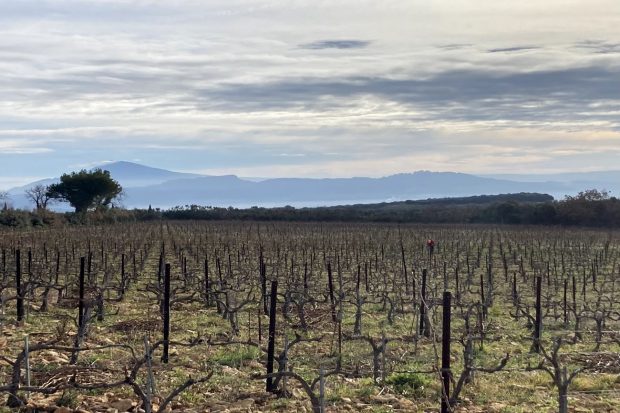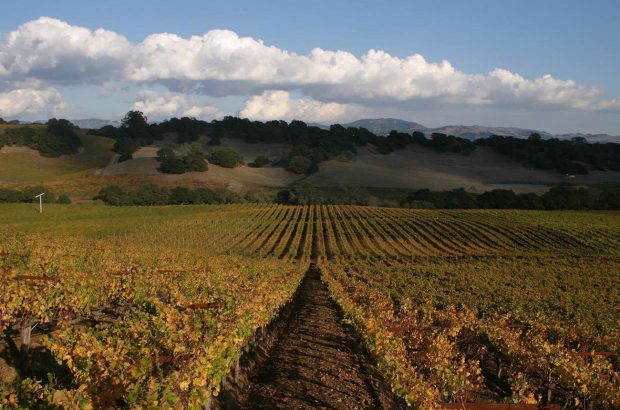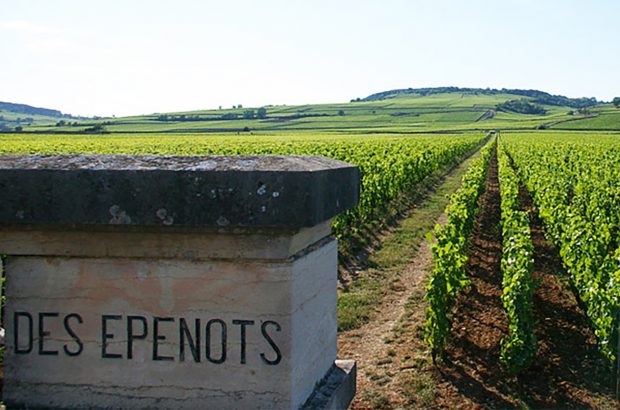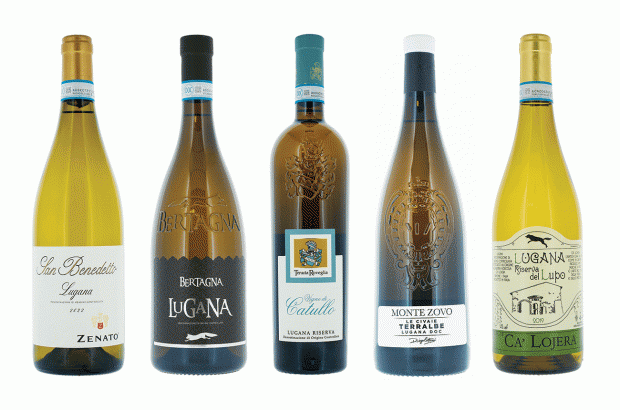As the term 'minerality' becomes ever more fashionable, so the search for a definition gathers momentum. Sarah Jane Evans MW canvasses opinion from winemakers and researchers around the globe.
Wine vocabulary is a poor traveller. The words we use are notoriously culture specific, from damsons to rambutans, and wakame to barley sugar. Now there’s a new word popping up on wine lists and in tasting notes, causing confusion. While ‘minerality’ is a term that I find useful, there’s no definite view on what it means.
The wines being described as mineral are also generally described as ‘elegant’, ‘lean’, ‘pure’ and ‘acid’. They have a taste as if of licking wet stones and often a chalky texture to match. Some argue that it only applies to white wines, but anyone who has tasted a Priorat from the area’s llicorella (slate) soils will know it also occurs in reds. Some argue that you can smell it, most that it appears on the palate.
The assumption is that mineral wines are superior to ‘mass market’, New World, fruity wines. They have a romantic image, one that implies they are handmade by artisans and express the mystery of the soil, with the viticulturist as the magical mediator. Typical examples are found in Chablis, in Priorat, in the Mencías of Ribeira Sacra and Bierzo, and of course in Loire Sauvignon Blancs, and Rieslings from the Mosel and Rheingau in Germany, and Wachau and Kremstal in Austria. Note that these are European examples. This is not just a European character but it does seem more prominent in places where the wines show less fruit and more acidity.
A recent term
The striking fact is that ‘minerality’ only started to make itself heard in the 1980s. It did not appear in Emile Peynaud’s The Taste of Wine (1983), or Ann Noble’s Aroma Wheel (1984), or indeed in The Oxford Companion to Wine (2006 – though it will be present in the 4th edition due out in 2015). Anecdotally, WSET students tell me that their tutors advise them not to use it in tasting notes. Yet it’s a fashionable term, well-established among wine aficionados.
Where does this obsession come from? Among many consumers, after all, a mineral ‘licked stones’ character is seen as negative. Has viticulture or winemaking changed? Or are we just being seduced by clever marketing? Many producers see it as an expression of the terroir, while some oenology experts put it down to compounds produced in winemaking. Whatever the origin, there is no agreed definition of minerality, but for many, myself included, it’s a very useful word.
Fact or fiction?
Let’s start with what is known. The International Mineralogical Association defines ‘mineral’ as ‘an element or chemical compound that is normally crystalline and that has been formed as a result of geological processes’. So vines take up elements from the soil and this gives wines their distinct taste? Right? Wrong! The mineral elements in wine are tiny; only potassium and calcium even come close to 1,000 parts per million. There’s no question of tasting them. As a result, science gives the ‘mineral’ tasting note short shrift.
{"content":"PHA+QXMgUHJvZmVzc29yIERyIE1vbmlrYSBDaHJpc3RtYW5uIGZyb20gR2Vpc2VuaGVpbSBVbml2ZXJzaXR5IHNheXMsIOKAmFRoZXJlIGFyZSBsb3RzIG9mIGZhaXJ5IHRhbGVzLCBhbmQgYSBsb3Qgb2Ygd2lzaGZ1bCB0aGlua2luZy4gV2UgY2FuIGFncmVlIG9uIHNhbHQgYW5kIHN3ZWV0LCBhbmQgY2FuIGRlc2NyaWJlIGl0LCBidXQgdGhlcmUgaXMgbm8gZGVmaW5pdGlvbiBvZiBtaW5lcmFsaXR5IGFuZCBhcyBhIHJlc3VsdCBwZW9wbGUgaW50ZXJwcmV0IGl0IHZlcnkgZGlmZmVyZW50bHku4oCZPC9wPgo8ZGl2IGNsYXNzPSJhZC1jb250YWluZXIgYWQtY29udGFpbmVyLS1tb2JpbGUiPjxkaXYgaWQ9InBvc3QtaW5saW5lLTQiIGNsYXNzPSJpcGMtYWR2ZXJ0Ij48L2Rpdj48L2Rpdj4KPHA+TmV2ZXJ0aGVsZXNzLCBhbnlvbmUgd2hvIGhhcyBldmVyIHN0b29kIGluIGEgdmVydGlnaW5vdXMgc2xhdGUgdmluZXlhcmQgaW4gdGhlIE1vc2VsIHdpbGwgYmVsaWV2ZSB0aGUgd2luZSB0YXN0ZXMgb2YgaXRzIG9yaWdpbnMuIFJvbWFuIEhvcnZhdGggTVcsIERvbcOkbmUgV2FjaGF1IHdpbmVyeSBkaXJlY3RvciwgcmVjb2duaXNlcyB0aGUgZ2FwaW5nIGhvbGUgYmV0d2VlbiBzY2llbmNlIGFuZCBhcnQ6IOKAmE9uIG9uZSBzaWRlIHdlIGtub3cgdGhhdCB0aGUgZGlyZWN0IGNhdXNhbCB0cmFuc2ZlciBvZiBtaW5lcmFscyBmcm9tIHRoZSBzb2lsIHRvIHRoZSBmaW5pc2hlZCB3aW5lIGlzIG5vdGhpbmcgd2UgY2FuIHByb3ZlLiBPbiB0aGUgb3RoZXIgc2lkZSB3ZSBvYnNlcnZlIHZhcnlpbmcgc3R5bGVzIG9mIHdpbmVzIGZyb20gZGlmZmVyZW50IHNvaWxzIGFuZCBnZW9sb2d5LuKAmTwvcD4KPHA+V2luZW1ha2VyIEFsdmFybyBQYWxhY2lvcyBoYXMgYnVpbHQgaGlzIHJlcHV0YXRpb24gb24gd2luZXMgZ3Jvd24gb24gc2xhdGUgc29pbHMgaW4gUHJpb3JhdCBhbmQgQmllcnpvLCBhcyB3ZWxsIGFzIGNvbXBsZXggc29pbHMgaW4gUmlvamEuIFdoaWxlIGhlIHJlY29nbmlzZXMgdGhlcmUgaXMgbGl0dGxlIHJlbGlhYmxlIGV2aWRlbmNlLCBoZSBzYXlzIOKAmFlvdSBoYXZlIHRvIGJlbGlldmUgaXTigJkuIFVzaW5nIEJpZXJ6byBhcyBhbiBleGFtcGxlLCBoZSBzYXlzIHRoYXQgTWVuY8OtYXMgZnJvbSB0aGUgY2FsY2FyZW91cyB2YWxsZXkgdmluZXlhcmRzIHdpdGggdGhlaXIgY2FsY2FyZW91cy1saW1lc3RvbmUgYW5kIHF1YXJ0eml0ZSBlbGVtZW50cyBhcmUg4oCYZ2VudGxlLCBzdWJ0bGUgd2luZXPigJksIHdoaWxlIHRoZSBWaWxsYSBkZSBDb3J1bGzDs24gd2luZXMgZ3Jvd24gb24gc2xhdGUgc2xvcGVzIHRhc3RlIG9mIGdyYXBoaXRlLiBIZSBhZGRzIHRoYXQgbGlnaHRlciB2YXJpZXRpZXMgc3VjaCBhcyBQaW5vdCBOb2lyIGFuZCBHYXJuYWNoYSBzaG93IG1pbmVyYWxpdHkgbW9yZSBjbGVhcmx5IHRoYW4gU3lyYWggb3IgVGVtcHJhbmlsbG8uIFBhbGFjaW9zIGhhcyBhIG1lc3NhZ2UgZm9yIHRoZSB3aGl0ZS1jb2F0ZWQgcmVzZWFyY2hlcnMgYW5kIHRoZSBzdXBlci1hbmFseXRpY2FsIGNyaXRpY3M6IOKAmHdpbmUgY2Fubm90IGJlIGEgdGVjaG5pY2FsIG9ic2Vzc2lvbuKAmS48L3A+CjxkaXYgY2xhc3M9ImFkLWNvbnRhaW5lciBhZC1jb250YWluZXItLW1vYmlsZSI+PGRpdiBpZD0icG9zdC1pbmxpbmUtNSIgY2xhc3M9ImlwYy1hZHZlcnQiPjwvZGl2PjwvZGl2Pgo8cD5MYXJvY2hlIHdpbmVtYWtlciwgR3LDqWdvcnkgVmllbm5vaXMsIHdvcmtpbmcgaW4gQ2hhYmxpcywgbWFrZXMgd2luZXMgdGhhdCBhcmUgY2xlYXJseSBpZGVudGlmaWVkIHdpdGggbWluZXJhbGl0eS4gSGUgdG9vIHJlY29nbmlzZXMgdGhlIGxhY2sgb2YgZXZpZGVuY2U6IOKAmEV2ZW4gaWYgdGhlIHNwZWNpZmljIG1hcmtlcnMsIHRoZSBtb2xlY3VsZXMgZGlyZWN0bHkgY29ubmVjdGVkIHdpdGggdGhlIG1pbmVyYWwgYXNwZWN0LCBhcmUgeWV0IHRvIGJlIHNjaWVudGlmaWNhbGx5IHByb3ZlbiwgdGhlIGFzdHV0ZSBhbWF0ZXVyIG9yIHByb2Zlc3Npb25hbCBhZ3JlZXMgd2l0aCB0aGlzIHRlcm1pbm9sb2d5LuKAmSBFeGFjdGx5LiBXZSBzZWUgb3IgaW1hZ2luZSB0aGUgc3RvbmVzIG9yIGNoYWxrIG9yIHNsYXRlLCBhbmQgd2UgY2FuIHZpc3VhbGlzZSB0aGUgZmxhdm91cnMuPC9wPgo8cD5JbiBGcmFua2VuLCBpdOKAmXMgcGFydCBvZiB0aGUgdm9jYWJ1bGFyeSBvZiBXZWluZ3V0IFJ1ZG9sZiBGw7xyc3Qgd2hvIHByb2R1Y2VzIHRocmVlIHdpbmVzIGxhYmVsbGVkIOKAmHB1ciBtaW5lcmFs4oCZLiBSb2JlcnQgV2VpbOKAmXMgSm9jaGVuIEJlY2tlci1Lw7ZobiBzYXlzIHdhdGVyIHRyYW5zbWl0cyB0aGUgdGVycm9pci4gVGhlIHZpbmUgcm9vdHMgZ3JvdyBkb3duIHNvbWUgNW0gdW50aWwgdGhleSByZWFjaCBpbXBlcm1lYWJsZSByb2NrLiBXaGVuIHRoZXkgcmVhY2ggdGhhdCBiYXJyaWVyIHRoZXkgdGFrZSB1cCB0aGUgd2F0ZXIgdGhhdCBmbG93cyBvdmVyIGl0LiBUaGUgd2F0ZXIgcmVsZWFzZXMgY29tcG91bmRzIGluIHRoZSBmaW5lIG9yZ2FuaWMgbWF0dGVyIHRoYXQgY29hdHMgcm9ja3MsIGFuZCB0aGlzIGlzIHdoYXQgdGhlIHZpbmVzIGFic29yYiDigJMgbm90IHRoZSBhY3R1YWwgcm9jayBvciBzdG9uZXMsIGJ1dCB0aGUgZmluZSBsYXllciBvZiBvcmdhbmljIG1hdHRlci48L3A+CjxwPkZvcnR1bmF0ZWx5IHRoZXJlIGFyZSByZXNlYXJjaGVycyB3b3JsZHdpZGUgc2Vla2luZyBjbGFyaXR5IG9uIHRoaXMuIERyIFdlbmR5IFBhcnIsIGJhc2VkIGF0IExpbmNvbG4gVW5pdmVyc2l0eSwgTmV3IFplYWxhbmQgaGFzIGNvbnRyYXN0ZWQgcGVyY2VpdmVkIG1pbmVyYWxpdHkgaW4gU2F1dmlnbm9uIEJsYW5jcyBpbiBGcmFuY2UgYW5kIGluIE5ldyBaZWFsYW5kLiBIZXIgcmVzZWFyY2ggaGFzIHRha2VuIGluIHNtZWxsLCB0YXN0ZSBhbmQgdGV4dHVyZS4gSHVtYW4gcmVhY3Rpb25zIHRvIHRhc3RlIGFyZSBkaWZmaWN1bHQgdG8gbWVhc3VyZSwgYnV0IERyIFBhcnIgZm91bmQgY29uc2lzdGVudCBpbnRlcnByZXRhdGlvbnMgb2YgbWluZXJhbGl0eTogY2l0cnVzLCBmcmVzaCB6aW5neSBub3RlcywgYSBmbGludHkvc21va3kgY2hhcmFjdGVyLCBhbmQgYSBjaGFsa3kgbm90ZS48L3A+CjxwPkluIFNwYWluLCBEciBBbnRvbmlvIFBhbGFjaW9zIChubyByZWxhdGlvbiB0byBBbHZhcm8pIG9mIExhYm9yYXRpb3MgRXhjZWxsLUliw6lyaWNhIGluIFJpb2phLCBhbmQgRGF2aWQgTW9saW5hIG9mIE91dGxvb2sgV2luZSBpbiBCYXJjZWxvbmEsIGhhdmUgYmVlbiBydW5uaW5nIGEgcHJvamVjdCBhbmFseXNpbmcgdGhlIGNoZW1pY2FsIGNvbXBvc2l0aW9uIG9mIHdpbmVzIHRoYXQgdGFzdGVycyBoYXZlIGFncmVlZCBzaG93IG1pbmVyYWxpdHkuIER1cmluZyB0aGUgcmVzZWFyY2ggdGhleSBmb3VuZCB0aGF0IHRhc3RlcnMgd2VyZSBlYXNpbHkgc3VnZ2VzdGlibGUuIFdoZW4gdGhleSBibGluZHRhc3RlZCBhIHNldCBvZiB3aW5lcyB0aGV5IGhhZCBwcmV2aW91c2x5IHRhc3RlZCwgYW5kIHdlcmUgYXNrZWQgdG8gaWRlbnRpZnkgdGhlIG9uZXMgdGhleSBmZWx0IHdlcmUgbWluZXJhbCBpbiBjaGFyYWN0ZXIsIHRhc3RlcnMgbWVudGlvbmVkIOKAmHNtZWxsIG9mIHN0b25l4oCZLCDigJhwZWJibGXigJkgYW5kIOKAmGZsaW504oCZIHdoZW4gdGhleSBoYWQgbm90IHVzZWQgdGhpcyB2b2NhYnVsYXJ5IHRoZSBmaXJzdCB0aW1lIHJvdW5kLiBQYWxhY2lvcyBhbmQgTW9saW5h4oCZcyBwcmVsaW1pbmFyeSByZXN1bHRzIHN1Z2dlc3QgdGhhdCB0aGUgdGVybXMg4oCYdGVycm9pcuKAmSBhbmQg4oCYbWluZXJhbGl0eeKAmeKApiDigJhhcmUgbm90IGNsb3NlbHkgcmVsYXRlZCB0byB0aGUgbGV2ZWwgb2YgbWluZXJhbCBtYXRlcmlhbHMgaW4gdGhlIGNoZW1pY2FsIGNvbXBvc2l0aW9uIG9mIHRoZSB3aW5lLCBhdCBsZWFzdCBhcyB0aGUgc29sZSBmYWN0b3LigJkuPC9wPgo8cD5Tb21lIGJlbGlldmUgZmlybWx5IHRoYXQgbWluZXJhbGl0eSBpcyBhIGRpcmVjdCBvdXRjb21lIG9mIHdpbmVtYWtpbmcsIGFuZCBwb2ludCB0byBoaWdoIGxldmVscyBvZiBhY2lkaXR5IGFuZCB0aGUgYWJzZW5jZSBvZiBwb3dlcmZ1bCBhcm9tYXRpYyBjb21wb3VuZHMgc3VjaCBhcyB0ZXJwZW5lcyBvciBmcnVpdHkgZXN0ZXJzLiDigJhJIGxvdmUgdGhlIHRlcm3igJksIHNheXMgU2FtIEhhcnJvcCBNVywgd2luZW1ha2luZyBjb25zdWx0YW50LiBIZSBiZWxpZXZlcyBtaW5lcmFsaXR5IGV4cHJlc3NlcyBpdHNlbGYgYm90aCBhcm9tYXRpY2FsbHkgYW5kIHRleHR1cmFsbHkuIOKAmEFyb21hdGljIGFzcGVjdHMgZnJvbSB2YXJpb3VzIGNvbXBsZXhlZCBzdWxwaGlkZXMsIGFuZCB0ZXh0dXJhbCBhc3BlY3RzIGZyb20gcEgsIGFjaWRpdHksIGNvbXBsZXhpdHkgYW5kIHRvIGEgbGVzc2VyIGV4dGVudCBiaXR0ZXJuZXNzIGFyZSBsaWtlbHkgW3RvIGJlXSBwbGF5aW5nIGEgcm9sZSBoZXJlLuKAmTwvcD4KPHA+V2luZXMgdGhhdCBoYXZlIGJlZW4gdGhyb3VnaCBtYWxvbGFjdGljIHBhcnRpYWxseSAobm90IGNvbXBsZXRlbHkpIOKAkyB3aGVyZSB0aGUg4oCYYXBwbGV54oCZIG1hbGljIGFjaWQgaXMgY29udmVydGVkIHRvIHRoZSDigJhtaWxreeKAmSBsYWN0aWMgYWNpZCDigJMgaGF2ZSBtdWNoIG11Y2ggbW9yZSBtaW5lcmFsIHRleHR1cmFsIHBvdGVudGlhbCwgaGUgYWRkcywgYmVjYXVzZSBvZiB0aGUgY29tcGxleGl0eSBvZiB0aGUgYWNpZCBwcm9maWxlLiBUaGVyZeKAmXMgYSBmdXJ0aGVyIGFjaWQgdG8gbm90ZTog4oCYc3VjY2luaWMgYWNpZCBtYXkgd2VsbCBiZSB0aGUgbW9zdCBpbXBvcnRhbnQgYWNpZCBpbiB0aGUgbWluZXJhbCBkZWJhdGUsIGFuZCBsaWtlIGxhY3RpYyBhY2lkIGl0IGlzIHdpbmVtYWtpbmctcmVsYXRlZC4gSGlnaGVyIGxldmVscyBvZiBzdWNjaW5pYyBhY2lkIGFyZSBhY2hpZXZlZCBpbiB0dXJiaWQsIHdhcm0sIHNwb250YW5lb3VzIGZlcm1lbnRzLOKAmSBoZSBzYXlzLjwvcD4KPHA+Rm9yIEhhcnJvcCwg4oCYTWluZXJhbGl0eSBwZXJjZXB0aW9uIGlzIHB1cmVseSB3aW5lbWFraW5nIHJlbGF0ZWTigKYgbW9zdCB3aW5lcyB0aGF0IGFyZSByZWR1Y2VkIHNob3cgbW9yZSBtaW5lcmFsIHBvdGVudGlhbC7igJkgTWFueSBjb21tZW50YXRvcnMgc3VnZ2VzdCB0aGF0IHN1bHBodXIgY29tcG91bmRzIHBsYXkgYSBzdHJvbmcgcGFydCwgd2l0aCB0aGUgc21va3ksIGZsaW50eSBjaGFyYWN0ZXIgdGhleSBjYW4gZ2l2ZS4gSGFycm9wIGhhcyBhIG1vcmUgaW5jbHVzaXZlIHZpZXc6IOKAmEnigJltIG5vdCBqdXN0IHJlZmVycmluZyB0byBzdWxwaGlkZXMgd2hlbiBJIHVzZSB0aGUgdGVybSByZWR1Y3Rpb24uIEEgbWluZXJhbCB0ZXh0dXJlIHNlZW1zIG1vcmUgYXBwYXJlbnQgaW4gd2luZXMgdGhhdCBoYXZlIHNlZW4gbGVzcyBveHlnZW4gZHVyaW5nIHRoZSBwcm9jZXNzLuKAmTwvcD4KPHA+PHN0cm9uZz5ObyBjbGVhciBjb25jbHVzaW9uPC9zdHJvbmc+PC9wPgo8cD5UaGUgZGViYXRlIG92ZXIgdGhlIG9yaWdpbiBhbmQgZGVmaW5pdGlvbiBvZiBtaW5lcmFsaXR5IGNvbnRpbnVlcy4gSXTigJlzIGRpc2FwcG9pbnRpbmcgZm9yIHRob3NlIG9mIHVzIHdobyBmaW5kIGl0IGEgdmVyeSB1c2VmdWwgdGVybS4gRm9ydHVuYXRlbHkgUGFsYWNpb3MgYW5kIE1vbGluYSBnaXZlIHVzIGEgbGV0LW91dCBpbiBjb25jbHVzaW9uLCBhcyB0aGV5IGFyZSBwcmVwYXJlZCB0byBhZG1pdCB0aGF0IHRoZXJlIG1heSBiZSBtb2xlY3VsZXMgdGhhdCBvbmUgd2F5IG9yIGFub3RoZXIgYXJlIGEgcmVtaW5kZXIg4oCYYnkgb2xmYWN0b3J5IGFuZC9vciBndXN0YXRvcnkgYXNzb2NpYXRpb24gb2YgdGhlIHdvcmxkIG9mIG1pbmVyYWxzLCBhbHRob3VnaCBbdGhlXSBzb2lsIG9yIG1pbmVyYWxzIHRoYXQgY29tcG9zZSBpdCBkbyBub3QgaGF2ZSB0byBiZSB0aGUgc2luZ2xlIHNvdXJjZSBvZiBpdOKAmS4gV2UgYXdhaXQgbW9yZSBldmlkZW5jZS4gRm9yIHRoZSB0aW1lIGJlaW5nIHdlIGNvdWxkIGV4cHJlc3MgdGhlIG15c3RlcmllcyBvZiBtaW5lcmFsaXR5IGluIGEgcGxheWZ1bCBmb3JtdWxhOiBbU1MrQStDQ10g4oCTIFtFK1RdIOKAkyBbT8KyXSA9IE1pbmVyYWxpdHkgd2hlcmUgU1MgaXMgU3RvbnkgU29pbHMsIEEgaXMgQWNpZCwgQ0MgaXMgQ29vbCBDbGltYXRlLCBFICsgVCBhcmUgdGhlIGZydWl0eSBhc3BlY3RzIG9mIHdpbmUgaW4gRXN0ZXJzIGFuZCBUaGlvbHMsIGFuZCBPwrIgaXMgb3h5Z2VuLiBNb3JlIGJyaWVmbHksIGxvb2sgZm9yIHdpbmVzIHRoYXQgY29tZSBmcm9tIHN0b255IHNvaWxzIGFuZCBjb29sIGNsaW1hdGVzLCBoYXZlIG1hcmtlZCBhY2lkaXR5LCBhcmUgbm90IG92ZXJ0bHkgZnJ1aXR5IGFuZCBoYXZlIG5vdCBiZWVuIG11Y2ggZXhwb3NlZCB0byBveHlnZW4uIElmIHlvdSBlbmpveSB0aGlzIHN0eWxlLCB0aGlzIG1heSBiZSBhIHVzZWZ1bCBzaG9ydGhhbmQgZm9yIGZpbmRpbmcgaXQuPC9wPgo8ZGl2IGNsYXNzPSJpbmplY3Rpb24iPjwvZGl2Pgo8cD5NaW5lcmFsaXR5IG1heSBoYXZlIGFycml2ZWQgc3VkZGVubHkgaW4gb3VyIHRhc3Rpbmcgbm90ZXMgYnV0IGl0IHdpbGwgdGFrZSBsb25nZXIgZm9yIHNjaWVuY2UgdG8gZXhwbGFpbiBpdC4gQW5kIGV2ZW4gbG9uZ2VyLCBzYXlzIE1vbGluYSwgdG8gY29udmluY2Ug4oCYdGhlIHJvbWFudGljc+KAmS4gSW4gdGhlIG1lYW50aW1lLCBhcyBvbmUgb2YgdGhlc2Ugcm9tYW50aWNzLCBJIHdpbGwgY29udGludWUgdG8gdXNlIGl0LiBUYXN0aW5nIG5vdGVzIGFyZSBhbGwgYWJvdXQgbWV0YXBob3IgYW5kIHRyYW5zZmVycmVkIGlkZWFzLCBhbmQgbWluZXJhbGl0eSBpcyBhIHdvcmQgdGhhdCB3b3Jrcy48L3A+CjxwPsKgPC9wPgo8cD4K"}
See Sarah Jane Evans’ top five wines for a taste of minerality:
{}
{"wineId":"21329","displayCase":"standard","paywall":true}
{"wineId":"21331","displayCase":"standard","paywall":true}
{"wineId":"21332","displayCase":"standard","paywall":true}
{"wineId":"21330","displayCase":"standard","paywall":true}
{"wineId":"21333","displayCase":"standard","paywall":true}
{}















